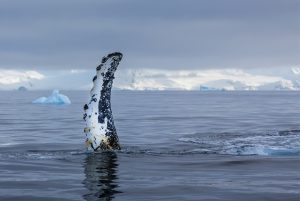Antarctica has a way of making you ask, in awe, “How are we here?” but also sometimes, “Should we be here?” It frequently reminds you that, unlike the oversized mammals and teeming bird colonies that thrive in its ice-clogged waters and on its barren shores, if you had to try, you wouldn’t survive very long.
On a 12-day Ultimate Antarctica cruise in February 2017, Canadian Geographic creative director Javier Frutos and 80 other polar voyagers explored the straits and bays of the northern Antarctic Peninsula, the icy Weddell Sea and Elephant Island, and traversed stormy Drake Passage to the Falkland Islands on the ice-strengthened ship Akademik Sergey Vavilov. Frutos captured the amazing images in this photo essay during the trip.
After days defined by a seemingly endless parade of killer, humpback and minke whales, fur seals, leopard seals and myriad penguins, terns and other seabirds throughout the peninsula, the Vavilov probed the Weddell Sea. Thick with tabular icebergs the shape and size of football fields carved from Antarctic ice shelves, the Weddell is thought to contain the clearest waters of any sea in the world (a visibility of nearly 80 metres was recorded in the 1980s). That clarity is a boon to those on the lookout for marine mammals. And it’s on the sea’s coast that some passengers took the opportunity to sleep out on the ice, digging long, shallow holes to fit themselves and their sleeping bags before falling asleep to the creaking of ice floes and icebergs cracking and calving in the distance.
As famed polar explorer Ernest Shackleton and his men could attest — having lost their ship Endurance to Weddell ice in 1916 and sheltering on windswept Elephant Island for months — storms materialize here with little notice. After visiting the explorers’ historic makeshift refuge, Vavilov turned north into a building grey, and for four days and nights negotiated the famously rough Drake Passage. Despite the fact that it’s more than 800 kilo metres wide, it’s still the narrowest stretch of water between Antarctica and any other continent. The Antarctic Circumpolar Current barrels through the passage unhindered, from Pacific to Atlantic, as it encircles the southern most continent, whipping up heavy winds, sudden squalls and heaving swells.
At last, however, Vavilov emerged near the terra firma of the Falkland Islands — specifically the sandy “neck” of northwesterly Saunders Island. After swirling storms, a golden sunrise hike along coastlines crowded with Magellanic, gentoo, king and southern rockhopper penguins felt to passengers a bit like the proverbial “other side.”
This story was originally published in the November 2017 issue of Canadian Geographic.














